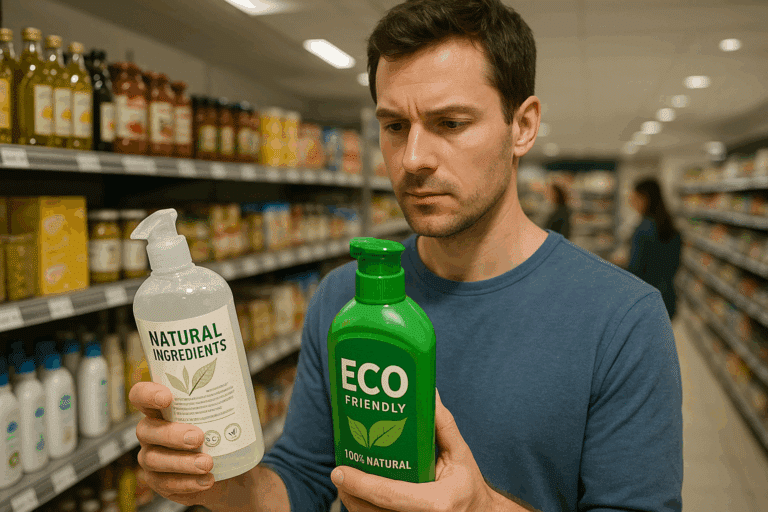A fact often overlooked is the carbon footprint of the digital world. From the energy consumed by data centers to the electronic waste created by obsolete gadgets, the impact is real and growing. But, what if we could harness the power of technology to not only innovate but also mitigate its environmental repercussions? 💡🌎
As we stand at the crossroads of innovation and environmental sustainability, a new breed of eco-friendly digital products is emerging – and it’s time we paid attention. These ‘Green Edge’ digital products are not just about the sleek user interface or groundbreaking features. They incorporate environmental considerations into every stage of their lifecycle, from design and manufacturing to use and disposal.
In this comprehensive article, we will delve into the world of eco-friendly innovation, unearthing digital products that are leaving a green imprint on the tech landscape. We will explore the essential characteristics of these ‘Green Edge’ products and how they are transforming industries and consumer behaviors. Moreover, we will look at the challenges they face and how they are overcoming them. Prepare to be enlightened! 🚀🌱
Why the Green Edge?
Before we venture further, it’s essential to understand why this shift towards eco-friendly digital products is crucial. It’s not just about hopping on the green bandwagon. The technology sector is a significant contributor to global carbon emissions, and as digital products multiply, so does the environmental impact.
The ‘Green Edge’ movement aims to reverse this trend by promoting the design and use of digital products that reduce environmental harm. It’s about leveraging technology to drive sustainable change, not just in the tech sector but across industries and societies.
Unveiling Green Edge Digital Products
Now that we’ve set the stage, it’s time to shine the spotlight on some of the remarkable digital products that exemplify the ‘Green Edge’. From green data centers that use renewable energy and advanced cooling technologies, to eco-friendly gadgets made from recycled materials, we’ll cover a range of products that are pushing the boundaries of sustainable innovation.
Prepare to delve into the world of eco-friendly innovation, where technology meets sustainability, and where every byte and pixel count towards a greener future. 🌿💻
Challenges and Opportunities
Of course, the path to eco-friendly innovation isn’t always smooth. There are hurdles to overcome, from technical challenges to market acceptance. We’ll explore these issues and how digital product creators are tackling them head-on. We’ll also uncover the opportunities that lie ahead, from new markets to improved brand reputation and customer loyalty.
So, buckle up for a ride into the future of digital products – a future where innovation and environmental responsibility go hand in hand. A future where the ‘Green Edge’ isn’t just a trend, but a necessity. Let’s embark on this journey together! 🚀🌿
Embracing Green Innovations: The Rise of Eco-Friendly Digital Products
As the world becomes increasingly aware of the need for sustainability, many industries are looking to adopt eco-friendly practices. In the tech sphere, this has led to the emergence of digital products that not only offer cutting-edge functionality but also have a minimal environmental impact. In this article, we’ll delve deep into this rising trend, exploring some of the leading examples and discussing their significance for our planet’s future.
Before we jump into specific examples, let’s first understand what exactly we mean by ‘eco-friendly digital products’. These are software, apps, or digital services designed with the environment in mind, either by reducing energy consumption, encouraging sustainable behaviors, or in some cases, even directly contributing to environmental conservation.
This trend is not just a marketing gimmick; it’s a response to a very real issue. According to the United Nations, e-waste is the fastest-growing waste stream globally, with 53.6 million metric tons generated in 2019 alone. By embracing eco-friendly digital products, we can help to mitigate this problem while still enjoying the benefits of the digital era.
Eco-Friendly Digital Products: Leading the Charge
Now that we’ve defined what eco-friendly digital products are, let’s take a closer look at some of the standout examples in the market.
1. Ecosia: This search engine is a perfect example of how digital products can have a direct, positive impact on the environment. For every search you make, Ecosia plants a tree, with over 100 million trees planted so far. To illustrate the difference you can make, check out the video below from the Ecosia YouTube channel: “How Does Ecosia Work?”
2. Reforestum: This app takes a personal approach to carbon offsetting. By entering information about your lifestyle, the app calculates your carbon footprint and helps you offset it by funding tree-planting projects. You can even track your forest’s growth over time.
3. Oroeco: This innovative app is designed to help you live a more sustainable life. It tracks your carbon footprint in real-time, provides tips for reducing it, and rewards you for making eco-friendly choices.
Comparing Eco-Friendly Digital Products
When choosing an eco-friendly digital product, it’s important to consider how it aligns with your personal needs and values. To help you make an informed decision, let’s compare some of these products based on their features and impact.
| Product | Key Features | Environmental Impact |
|---|---|---|
| Ecosia | Search engine, transparent business model, privacy-friendly | Plants trees with ad revenue, over 100 million trees planted |
| Reforestum | Personal carbon offsetting, real-time tracking of your forest | Supports tree-planting projects, reduces your carbon footprint |
| Oroeco | Real-time carbon tracking, tips for sustainable living, rewards for eco-friendly choices | Encourages sustainable behaviors, contributes to carbon offsetting |
As you can see, each product offers a unique approach to sustainability. Whether you want to plant trees with your searches, offset your personal carbon footprint, or get rewarded for living sustainably, there’s a digital product out there for you.
The Future of Eco-Friendly Digital Products
As we look towards the future, the trend of eco-friendly digital products shows no signs of slowing down. With growing consumer demand for sustainable options and increasing recognition of the climate crisis, we can expect to see more and more digital products with a green edge emerging in the market.
While these products alone can’t solve the environmental challenges we face, they represent a positive step towards a more sustainable future. By choosing eco-friendly digital products, we can enjoy the benefits of technology without contributing to the e-waste problem. And perhaps more importantly, we can begin to shift the narrative around what it means to be a responsible digital consumer.
To keep up with this exciting trend, be sure to stay tuned for updates and new releases. And remember, every small change can make a big difference for our planet. 🌍

Conclusion
In conclusion, we have delved deeply into the world of software engineering, demystifying complex concepts and shedding light on its various aspects. This journey, although technical in nature, is fundamental in today’s digital-driven world, where software development plays a critical role in almost every industry. 💻
We embarked on an exploration of key areas such as the Agile development methodology, the importance of data structures and algorithms, and the value of programming languages. We discussed how Agile development empowers teams to collaborate effectively, respond to changes swiftly, and deliver value to customers more quickly. 🔄
Our journey through data structures and algorithms revealed their significance in creating efficient and powerful software applications. We uncovered how data structures provide a means of organizing information, and algorithms provide step-by-step procedures for performing tasks, both critical for the development of efficient software. 🔍
We also highlighted the value of programming languages in software development, exploring how languages like Java, Python, and C++ enable developers to create a wide range of applications. These languages provide the syntax and semantics that allow developers to instruct computers to perform tasks, bringing software applications to life. 🌐
As we further delved into the software engineering landscape, we realized the importance of software testing. We explained how testing ensures that software is reliable, secure, and user-friendly, ultimately leading to the delivery of high-quality products. 👍
This journey would not have been complete without looking at the ethics in software engineering. We underscored the need for honesty, responsibility, and respect for the intellectual property of others, emphasizing the impact of ethical considerations on the reputation of software engineers and the quality of their work. ✅
We’ve covered a lot of ground, but remember, this is just the tip of the iceberg. There’s so much more to explore and understand in the world of software engineering, and I encourage you to continue your journey of discovery. 🚀
The world of software engineering is constantly evolving, and staying updated is crucial. So, keep learning, keep exploring, and most importantly, keep applying what you learn. As we continue to delve deeper into this fascinating field, remember to share your insights and experiences. 💡
So, what’s next for you in this journey? What areas are you excited to delve into? What challenges are you eager to overcome? Feel free to share your thoughts and insights in the comments section below. I look forward to hearing your experiences and learning from them. 📢
Also, do not hesitate to share this article with those you believe would benefit from it. Together, we can demystify the world of software engineering and make it more accessible to everyone. Let’s create a community of learners, explorers, and innovators who are ready to shape the future of technology. 🌍
I hope this journey has been insightful and inspiring for you. It’s been a pleasure sharing my knowledge and experiences with you. Here’s to a future filled with innovative, efficient, and impactful software applications. Until next time, happy coding! 👨💻
References:
[1] Agile Alliance. (2001). Manifesto for Agile Software Development. [Online] Available at: https://agilemanifesto.org/
[2] Cormen, T. H., Leiserson, C. E., Rivest, R. L., & Stein, C. (2009). Introduction to algorithms. MIT press.
[3] Oracle. (2020). The Java® Language Specification, Java SE 14 Edition. [Online] Available at: https://docs.oracle.com/javase/specs/jls/se14/html/index.html
[4] IEEE-CS/ACM. (2018). Software Engineering Code of Ethics and Professional Practice. [Online] Available at: https://www.acm.org/about-acm/acm-code-of-ethics-in-english



